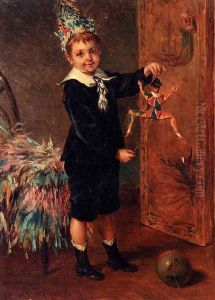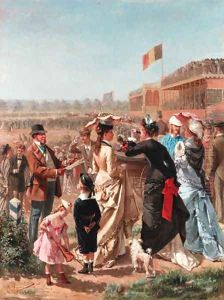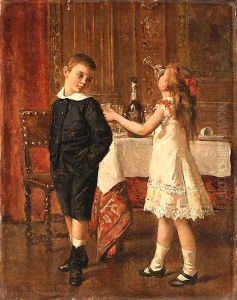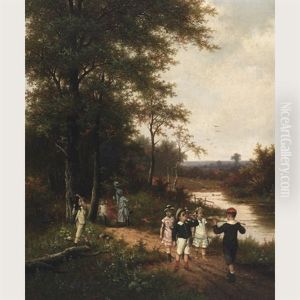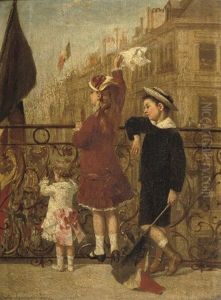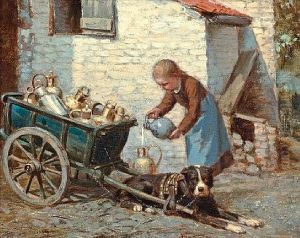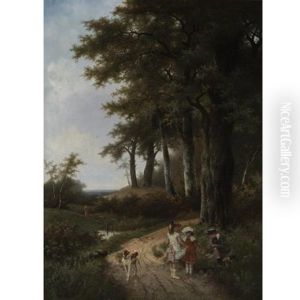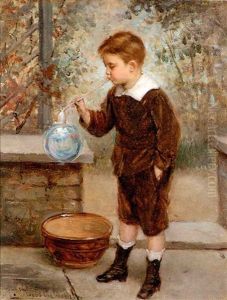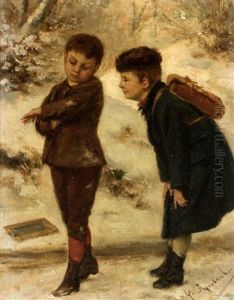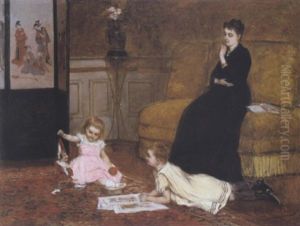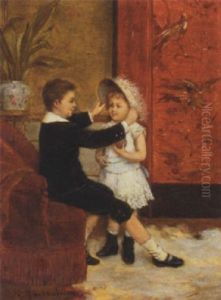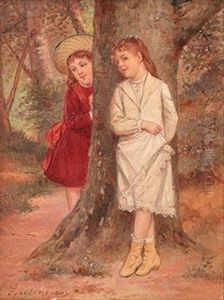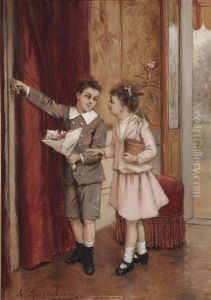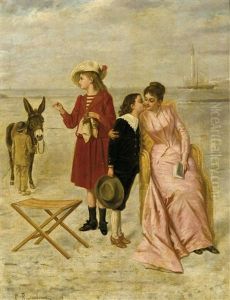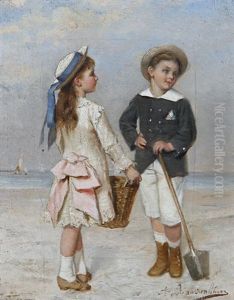Albert Roosenboom Paintings
Albert Roosenboom was a Belgian artist known for his genre paintings and portraits, born in 1845 in Brussels. Although not as widely recognized as some of his contemporaries, Roosenboom showed considerable talent and was part of the vibrant Belgian art scene of the 19th century. His work is characterized by its delicate portrayal of domestic and everyday scenes, often depicting children, families, and elegantly dressed women in interior settings. His style was influenced by the Belgian Romantic school as well as by the realism that was gaining ground in the artistic community of his time.
Roosenboom received his art education from the Royal Academy of Fine Arts in Brussels, where he studied under the guidance of notable artists such as Joseph Stallaert. His training at the Academy provided him with a strong foundation in classical art techniques and the academic style that was prevalent in the mid-19th century. Despite his early death at the age of 30 in 1875, Roosenboom managed to produce a body of work that was well received by his peers and the art-loving public. His paintings were exhibited in several salons and exhibitions, contributing to the cultural life of Belgium during his brief career.
While the specifics of Roosenboom's life and career are not extensively documented, his surviving works suggest that he had a particular affinity for capturing the nuances of light and shadow, as well as a sensitivity to the emotional states of his subjects. His artwork serves as a testament to the rich artistic traditions of Belgium in the 19th century and offers a glimpse into the private lives and intimate moments of the era. Today, Albert Roosenboom's paintings can be found in private collections and occasionally appear in art auctions, where they continue to be appreciated for their charm and technical proficiency.
